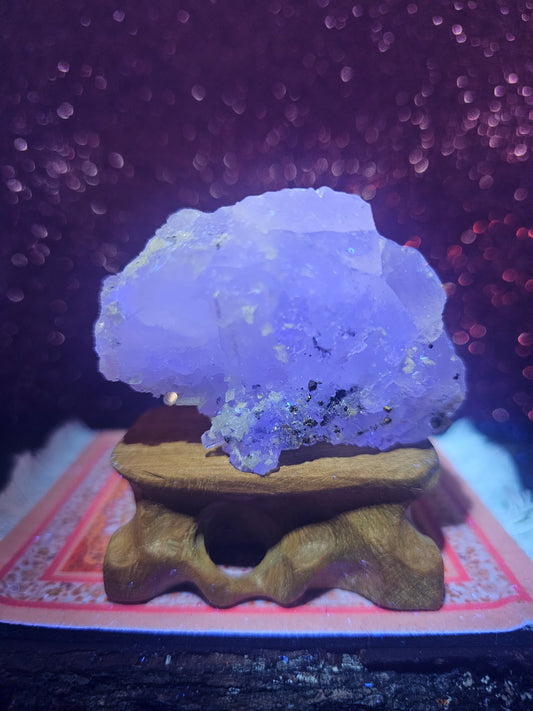Nature never ceases to amaze us with its myriad of captivating minerals, each with its unique beauty and fascinating story. One such gem that has captured the attention of geologists and gem enthusiasts alike is epidote. With its mesmerizing green hues and intriguing metaphysical properties, epidote has found its place as a highly sought-after mineral. In this blog post, we will embark on a journey to explore the wonders of epidote, uncovering its origins, characteristics, and significance in the realm of minerals.
-
The Origins of Epidote: Epidote, derived from the Greek word "epidosis," meaning "increase" or "growth," aptly describes the mineral's ability to form in a wide range of geological environments. It belongs to the silicate family, specifically the epidote group, and is composed of calcium, aluminum, iron, and silicon. Epidote crystals can be found in metamorphic rocks, such as schists, gneisses, and granites, as well as hydrothermal veins and cavities.
-
The Colors and Aesthetics: What sets epidote apart is its remarkable range of colors, with green being the most common and desirable. However, it can also exhibit yellow, brown, black, or even colorless variations. The green hues are attributed to the presence of iron within the crystal structure. Epidote often forms in elongated prismatic crystals with a striated surface, showcasing its unique crystal habit.
-
Metaphysical Properties and Uses: Beyond its visual appeal, epidote has garnered attention for its metaphysical properties and healing energies. It is believed to possess the power of transformation, promoting personal growth, and inspiring positive change in one's life. Advocates of crystal healing suggest that epidote can enhance perception, intuition, and spiritual awareness. Some also associate it with balancing emotions and promoting emotional well-being.
-
Epidote Varieties: While epidote exists in various forms, two notable varieties stand out: pistacite and unakite. Pistacite is a rare gem-quality variety of epidote that exhibits an intense green color reminiscent of pistachio nuts. Its vibrant hue makes it a favored choice for jewelry. On the other hand, unakite is a captivating blend of epidote, pink orthoclase feldspar, and quartz. Unakite's distinctive mottled appearance, combining shades of green and pink, lends itself well to ornamental purposes.
-
Notable Epidote Localities: Epidote can be found in numerous locations worldwide, each offering a unique glimpse into the mineral's geological history. Some notable localities include Austria, Pakistan, Russia, France, Norway, Italy, and the United States. The Green Monster Mountain in Vermont, USA, is particularly famous for producing high-quality epidote specimens.
-
The Significance in Geology: Geologically, epidote is a significant indicator mineral, aiding geologists in understanding the formation and alteration processes within rocks. Its presence can indicate the intensity of metamorphism and hydrothermal activity. By studying epidote crystals, geologists can unravel the complex geological history of a region and gain insights into the conditions that shaped the Earth's crust.
Epidote, with its remarkable beauty and metaphysical allure, showcases the intricate wonders of the mineral world. From its origins in diverse geological settings to its multifaceted colors and metaphysical properties, epidote continues to captivate and inspire. Whether you appreciate it for its aesthetic appeal or delve into its geological significance, epidote remains an enthralling gem that adds a vibrant touch to our planet's geological tapestry.





